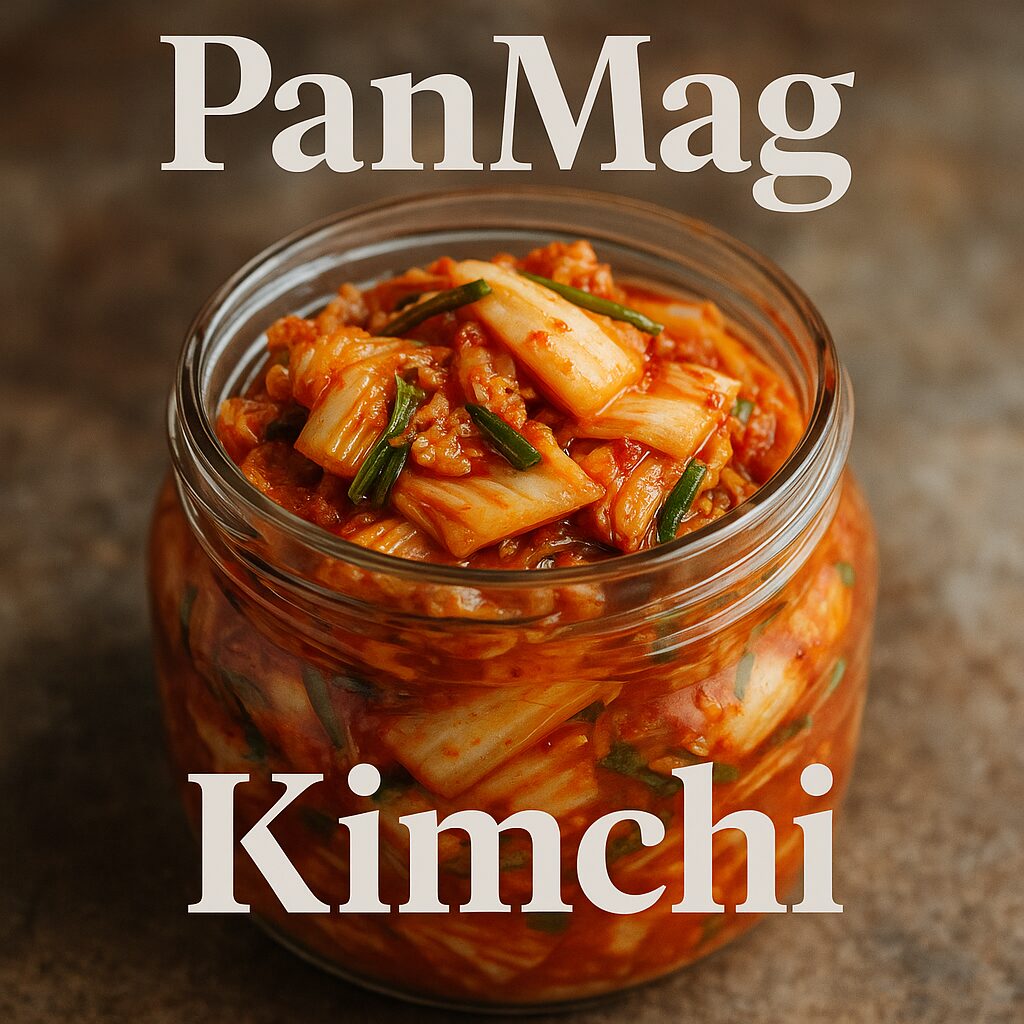Kimchi Recipe
Summary:
Kimchi, the beloved Korean dish, is a journey of flavors and aromas. Made from fermented vegetables, particularly napa cabbage and radishes, kimchi can be served as a side dish or added to your favourite recipes to boost flavour. This kimchi recipe takes you on a sensory adventure, guiding you through every step of making it from home, including a citrusy twist that brightens the deep umami flavours. The fermentation process adds a unique tang to the kimchi that builds over time, and soon, you’ll have a batch of homemade kimchi recipe that’s even better than store-bought, ready to tantalize your taste buds.
Equipment:
– Large mixing bowl
– Sharp knife and cutting board
– A large jar or airtight container (for fermenting)
– Clean kitchen towel
– Spoon for mixing
– Gloves (optional, to protect your hands from chilli)
Ingredients:
– 1 medium napa cabbage (about 2 lbs)
– 3 tablespoons sea salt (for salting cabbage)
– 2 cups water (for boiling)
– 1 tablespoon grated ginger
– 6 cloves garlic, minced
– 2 tablespoons fish sauce (or soy sauce for vegetarian option)
– 1 tablespoon sugar
– 2 tablespoons gochugaru (Korean red pepper flakes)
– 1 tablespoon rice vinegar
– 1 medium daikon radish, julienned (optional for crunch)
– 1 tablespoon fresh lemon juice (for citrus twist)
Instructions:
Step 1: Prepare the Cabbage
1. Start by washing and prepping the napa cabbage. Cut it in half lengthwise, then into quarters. Slice each quarter into 1–2-inch strips. Place the cabbage in a large mixing bowl.
2. **Next,** sprinkle the cabbage with sea salt, ensuring each piece is covered. Add the 2 cups of water and mix gently to dissolve the salt. Let it sit for about 2 hours, stirring occasionally. This will help the cabbage soften and release moisture, creating the brine needed for fermentation.
3. **Pro Tip:** As the cabbage sits, it will shrink and soften. Don’t worry if it becomes a bit limp – this is normal. The cabbage will soak up the brine and soften nicely.
Step 2: Make the Kimchi Paste
1. **In the meantime,** prepare the kimchi paste by combining the minced garlic, grated ginger, fish sauce (or soy sauce for the vegetarian option), sugar, and gochugaru in a small bowl. Stir to form a thick paste.
2. **Next,** stir in the rice vinegar and fresh lemon juice. The lemon juice adds a subtle citrusy freshness that balances the deep, savoury flavours of the fermented kimchi. Mix thoroughly to ensure all ingredients are incorporated.
3. **Pro Tip:** Taste the paste. If you like your kimchi spicier, add more gochugaru or chilli powder. For a less spicy version, reduce the amount of red pepper flakes.
Step 3: Combine the Cabbage and Paste
1. **After the cabbage has sat for 2 hours,** drain off the excess brine and gently squeeze out any additional water from the cabbage.
2. **Add the kimchi paste to the cabbage** and toss thoroughly. You want every piece of cabbage coated with the spicy, aromatic paste. The paste should be thick enough to stick to the cabbage and create an even coating.
3. **Pro Tip:** Use gloves to protect your hands from the heat of the chilli paste. The gochugaru can leave a lingering heat on your skin, so gloves are recommended for easy cleanup.
Step 4: Pack the Kimchi into Jars
1. **Now,** tightly pack the kimchi mixture into a clean jar or an airtight container. Leave a bit of space at the top of the jar (about 1–2 inches). This will give the kimchi room to expand as it ferments.
2. **Once packed,** seal the jar or container with a lid and leave it at room temperature for 1–2 days to ferment. After this initial period, you’ll start to see bubbles form inside the jar as the kimchi ferments and develops flavour.
3. Pro Tip: Check on your kimchi after 24 hours. If it’s fermenting too quickly, move it to a cooler place. Be prepared for a strong, tangy smell during fermentation. Refrigerate the kimchi after 2–3 days to slow the fermentation process.
Step 5: Serve and Enjoy
1. **After 3-5 days,** your kimchi is ready to enjoy! The fermentation time can vary depending on your desired level of tanginess. Taste the kimchi as it ferments and refrigerate once it reaches your desired flavour.
2. **Serve** the kimchi as a side dish, on top of rice, or as a flavorful addition to soups, stews, or fried rice. The **kimchi recipe** is also an excellent ingredient for Korean pancakes or kimchi stew.

Notes :
– Fermentation Tip: The longer you let the kimchi ferment, the more flavorful and tangy it will become. If you like a milder taste, enjoy it after 2-3 days of fermentation. Let it ferment for up to a week or more if you prefer a stronger flavour.
– Storage Tip: Store kimchi in the fridge to prevent it from fermenting too quickly. It will continue to ferment slowly in the refrigerator and can last up to 2–3 weeks, though it’s best eaten within the first 10 days for maximum flavour.
– Flavour Variations – Kimchi can be made with various ingredients – for example, you can substitute napa cabbage with other vegetables like bok choy or carrots. You can also add fruit, such as apples or pears, for a sweeter version of kimchi.
kimchi recipe kimchi recipe kimchi recipe kimchi recipe kimchi recipe kimchi recipe kimchi recipe
